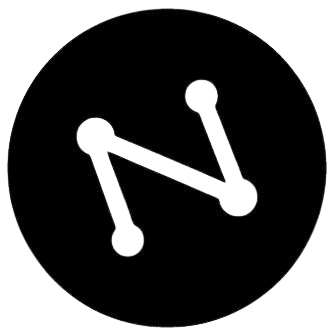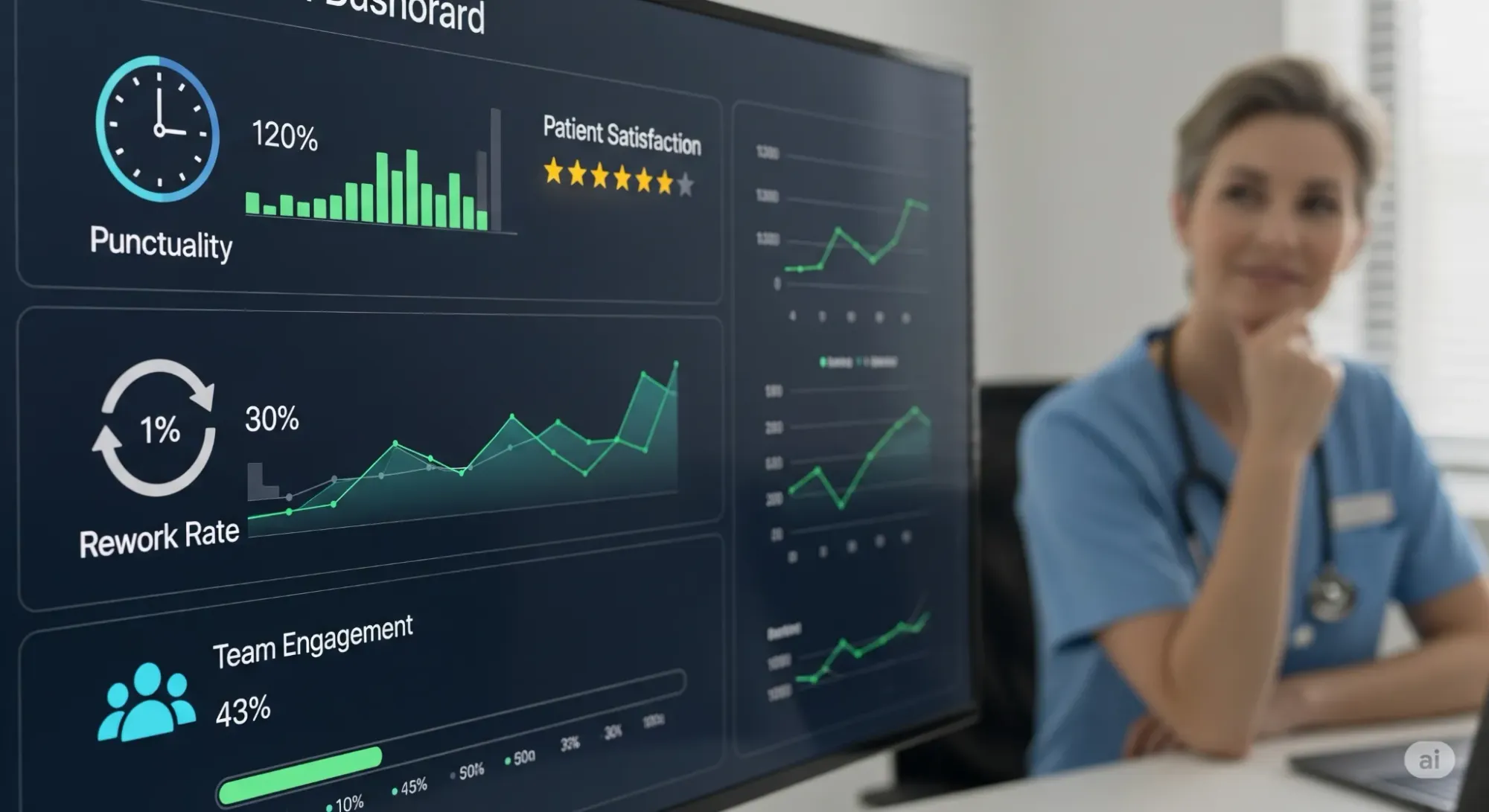
Team productivity in clinics and healthcare institutions goes far beyond goals, technologies, or processes. It is the direct result of a chain of decisions that begins long before an employee's first day of work. From choosing professional profiles to the way feedback is given day-to-day, every stage of the employee journey influences their performance, well-being, and engagement.
For clinic managers, deeply understanding this journey is essential for building high-performance teams, minimizing rework, and ensuring more humane and effective patient care. In this article, we will address the employee journey in clinics: what's behind team productivity.
Before we continue, we need to ask: Are you already familiar with Ninsaúde Clinic? Ninsaúde Clinic is a medical software with an agile and complete schedule, electronic medical records with legal validity, teleconsultation, financial control and much more. Schedule a demonstration or try Ninsaúde Clinic right now!

Why Team Productivity Begins Long Before Hiring
A common mistake is to assume that an employee becomes productive from the moment they join the clinic. In reality, productivity begins to be shaped during the selection process. Effective recruitment must go beyond technical skills: it should assess behavioral fit, personal values, and the ability to adapt to the clinical environment.
Aspects such as empathy, organization, and communication are essential, especially in clinics with a high volume of patients or multidisciplinary teams. Tools like profile tests, simulated group dynamics, and competency-based interviews help identify candidates who truly align with the institution's culture.

Onboarding: How the First Few Days Define Long-Term Performance
Onboarding is the critical moment when an employee forms their first impression of the clinic. a poorly structured process results in confusion, insecurity, and low productivity. On the other hand, a well-planned onboarding process reduces the adaptation time and promotes engagement from the very beginning.
Best practices include:
- Learning paths, with content segmented by role and function.
- A buddy system, to guide the new employee.
- Aligning expectations, with clear goals for the first 30, 60, and 90 days.
Ninsaúde Clinic, for example, offers video tutorials integrated into the system and direct support during implementation, facilitating the team's learning and rapid adaptation.
The Value of Clear Roles: How a Lack of Definition Creates Rework and Stress
Poorly defined roles not only generate rework but also conflict, disorganization, and emotional strain. When it isn't clear who is responsible for a specific task, it's common for it to be ignored or duplicated.
To avoid this:
- Document workflows and responsibilities clearly.
- Use checklists and SOPs (Standard Operating Procedures).
- Implement collaborative task and scheduling tools.
Software like Ninsaúde Clinic, with integrated schedules and customized access by profile, helps ensure that each professional has an exact view of their responsibilities.

A Culture of Efficiency: How to Create a Mindset of Continuous Improvement Across the Team
A productive team is one that is committed to constant evolution. This requires a culture of efficiency, where small improvements are celebrated and encouraged.
Rituals that strengthen this culture include:
- Weekly alignment meetings, to review processes and results.
- Peer reviews, promoting listening and exchange among colleagues.
- Individual development plans, with goals and periodic training.
It is up to the leadership to foster this environment, creating safe spaces for suggestions and constructive mistakes. Clinics that adopt this mindset tend to have lower turnover and greater commitment.
Tools vs. People: When the System Isn't the Problem
Many managers attribute low productivity to a lack of technology. However, tools only work when processes are well-defined and people are well-trained.
Before investing in new systems, you need to:
- Map out real operational bottlenecks.
- Evaluate the fluidity of internal communication.
- Ensure that professionals know how to use the available resources.
Ninsaúde Clinic is an example of a system that goes beyond technology, offering onboarding, training, and support so the team can take full ownership of its features. When used correctly, a system can eliminate repetitive tasks and free up time for more strategic activities.
Micromanagement or Neglect? The Balance in Supervising Healthcare Teams
One of the biggest challenges in management is finding the balance between excessive control and a lack of direction. Micromanagement breeds distrust and stifles initiative; neglect leads to disorganization and a loss of standards.
Good practices for balanced supervision include:
- Establishing clear goals and performance indicators.
- Delegating with autonomy, but with regular check-ins.
- Holding frequent one-on-one conversations focused on development.
Especially in clinics with many professionals, leadership must act as a facilitator, removing obstacles and promoting synergy between areas.

Draining Environments: How Physical Space and Routine Impact Team Energy
The physical environment directly impacts well-being and productivity. Poorly lit, noisy, or disorganized spaces generate fatigue and stress, even with skilled teams.
Points of attention for managers:
- Natural lighting and soft colors that encourage concentration.
- Noise reduction with proper dividers and insulation.
- Ergonomics at workstations.
- Routines with planned breaks and rest areas.
Furthermore, the way communication occurs is also part of the "environment": an aggressive tone, noise in messaging, and a lack of listening are factors that drain energy.
Continuous Feedback: The Fuel for High Performance (When Done Right)
Giving and receiving feedback is not a natural task for everyone, but it is a cornerstone of productive teams. The difference between feedback that guides and criticism that destroys lies in the method, frequency, and intent.
To create an effective feedback culture:
- Establish rituals, such as monthly performance meetings.
- Train leaders on active listening and nonviolent communication.
- Provide space for upward feedback (from the employee to the leadership).
Feedback should be specific, focused on behavior (not the person), and always provide clear direction for improvement.
How to Measure Team Productivity Without Falling for Vague Metrics
Finally, it is crucial to track indicators that truly reflect the quality of the team's work. It's not enough to count appointments or procedures: productivity is linked to effectiveness and the experience generated.
Recommended indicators:
- Punctuality in appointments.
- Patient satisfaction, via NPS or simple surveys.
- Rework rate (such as corrections, rescheduling, and data entry errors).
- Time to resolution per case.
- Team engagement (attendance, participation in training, etc.).
Management software like Ninsaúde Clinic offers dashboards with real-time indicators, giving managers a clear view of performance and facilitating decision-making.

Building Productive Teams with Consistency and Purpose
Productivity in clinics is not a fluke. It is the result of conscious choices that begin with recruitment and extend throughout the entire employee journey. Investing in culture, clear processes, a healthy environment, and balanced leadership is the most effective way to increase team performance and, consequently, the value delivered to the patient.
For healthcare managers, understanding that well-cared-for people provide better care is a mindset shift that yields sustainable results. The challenge is great, but the benefits are proportional to the commitment to this journey.
Liked the information? Then prepare for a continuous journey of knowledge by following our blog. Are you a health professional and not yet familiar with the benefits of Ninsaúde Clinic? Stay ahead, optimize your processes, and elevate excellence in patient care!

